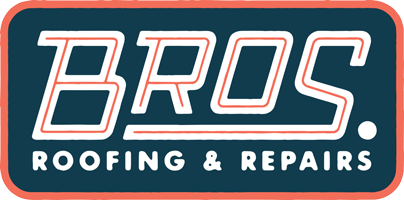
When it comes to roofing options for your home or building, there are several factors to consider, including architectural style, climate, budget, and personal preference. Flat and pitched roofs are two popular roofing styles that offer distinct advantages and disadvantages. In this blog post, we'll explore the pros and cons of each roofing style and how they complement different architectural designs.
Flat Roofs
Pros:
Modern Aesthetic: Flat roofs are often associated with contemporary and modern architectural styles, making them an ideal choice for minimalist, industrial, and urban-inspired designs. Their clean lines and sleek appearance can enhance the overall aesthetic appeal of a building, providing a seamless transition between indoor and outdoor spaces.
Utilization of Space: Flat roofs offer additional usable space, allowing homeowners to create rooftop gardens, outdoor living areas, or solar panel installations. This versatility maximizes the potential of the roof area, providing opportunities for recreation, relaxation, and energy efficiency improvements.
Ease of Installation: Flat roofs are typically easier and faster to install compared to pitched roofs, resulting in lower labor costs and shorter construction timelines. This makes flat roofs an attractive option for new construction projects or renovations where time and budget constraints are a consideration.
Cons:
Drainage Issues: One of the primary challenges of flat roofs is drainage. Without a slope to facilitate water runoff, flat roofs are prone to water pooling, which can lead to leaks, water damage, and premature deterioration of roofing materials. Proper installation of drainage systems, such as roof drains or scuppers, is essential to mitigate these issues.
Maintenance Requirements: Flat roofs require regular maintenance to prevent debris buildup, ponding water, and membrane damage. Inspection and cleaning of gutters, drains, and flashing are necessary to ensure proper drainage and prolong the lifespan of the roof. Additionally, flat roofs may need recoating or repairs more frequently than pitched roofs due to exposure to the elements.
Limited Insulation Options: Flat roofs may have limited insulation options compared to pitched roofs, which can affect energy efficiency and thermal performance. Proper insulation is crucial for preventing heat loss in winter and heat gain in summer and reducing energy consumption and utility costs. Homeowners may need to explore alternative insulation methods or roofing materials to achieve optimal energy efficiency with a flat roof.
Pitched Roofs
Pros:
Traditional Charm: Pitched roofs are synonymous with traditional architectural styles such as colonial, farmhouse, and Tudor, evoking a sense of timeless charm and character. Their steep slopes and gabled or hipped designs add visual interest to a home's exterior, enhancing curb appeal and resale value.
Effective Drainage: Pitched roofs are designed to facilitate water runoff, allowing rain, snow, and debris to shed off the roof surface easily. This helps prevent water pooling, leaks, and moisture-related issues, promoting the longevity and durability of roofing materials. Properly installed gutters and downspouts further enhance drainage efficiency.
Attic Space: The slope of a pitched roof creates additional attic space, which can be utilized for storage, HVAC equipment, or living quarters such as bedrooms or home offices. Attic ventilation is essential for maintaining indoor air quality, regulating temperature, and preventing moisture buildup, contributing to a healthier and more comfortable living environment.
Cons:
Higher Construction Costs: Pitched roofs typically require more materials and labor compared to flat roofs, resulting in higher construction costs and longer installation times. The complexity of the roof design, including framing, trusses, and sheathing, adds to the overall expense of a pitched roof.
Limited Design Flexibility: Pitched roofs may have limitations in design flexibility compared to flat roofs, particularly for modern or contemporary architectural styles. The slope of the roof may restrict options for rooftop amenities, solar panel installations, or outdoor living spaces, depending on the pitch and configuration of the roof.
Maintenance Challenges: While pitched roofs are effective at shedding water and debris, they may still require periodic maintenance to address issues such as damaged shingles, flashing leaks, or attic ventilation problems. Routine inspection, repair, and cleaning of the roof and gutters are necessary to ensure optimal performance and longevity.
In conclusion, both flat roofs and pitched roofs offer unique advantages and disadvantages that cater to different architectural styles, climates, and homeowner preferences. The decision between the two roofing styles ultimately depends on factors such as aesthetic preferences, functional requirements, budget considerations, and maintenance commitments. Whether you prefer the modern elegance of a flat roof or the timeless charm of a pitched roof, careful consideration of the pros and cons will help you make an informed choice that meets your needs and complements the architectural style of your home or building.
